Discover the perfect fit with our comprehensive guide to ring finger sizing. Learn how to measure accurately, understand size charts, and find your ideal ring size effortlessly.
Understanding the Importance of Proper Fit
A proper fit is essential for both comfort and functionality. A ring that is too tight can cause irritation or restrict blood flow, while one that is too loose may spin or even fall off. Proper sizing ensures the ring sits comfortably, allowing for a full range of motion. It also prevents damage to the ring itself, as an overly tight fit can strain the band, and a loose fit may lead to accidental bending or loss. Additionally, the right fit enhances the ring’s aesthetic appeal, ensuring it looks as intended on the finger. Considering factors like knuckle size, finger shape, and band width is crucial for achieving the ideal balance between comfort and style.
Overview of Ring Size Measurement Methods
Several methods exist to determine ring size, each offering unique advantages. The most common techniques include using a printable ring size chart, measuring with a string or paper strip, and employing digital tools for precision. Jewelers often use finger gauges or digital calipers to ensure accuracy. Additionally, comparing an existing ring to a size chart can provide reliable results. Home methods are convenient and cost-effective, while professional tools offer higher precision. Combining these approaches helps achieve the most accurate measurement, ensuring a comfortable and flattering fit. Each method caters to different preferences, whether measuring at home or in a store, making it easy to find the perfect size.

Ring Finger Size Charts and Standards
Ring finger size charts provide standardized measurements to ensure a perfect fit. They vary by country, reflecting different sizing systems, and help compare sizes globally for accuracy.
US Ring Size Chart for Men and Women
The US ring size chart is a standardized system used to determine the perfect fit for both men and women. For women, sizes typically range from 3 to 9, with the average being around 6. Men’s sizes generally span from 6 to 13, with the average being 9 or 10. This chart is based on the internal diameter of the ring, measured in millimeters. To ensure accuracy, many jewelers recommend using a printable ring size chart or a string/paper method to measure the finger. Digital tools, like calipers, can also provide precise measurements. It’s important to consider finger shape and knuckle size, as these can affect the fit. Wide bands may require a half size larger for comfort. Referencing the US chart ensures a consistent and reliable sizing guide for both genders.
UK and European Ring Size Equivalents
Ring sizes in the UK and Europe differ from the US system, using a alphabetical scale (A-Z) based on the internal diameter of the ring. For instance, a US size 6 corresponds to an L in the UK and a 16 in Europe. Women’s UK sizes typically range from H to R, while men’s sizes range from N to Z. This alphabetical system ensures a precise fit, with each letter representing a specific measurement. To avoid confusion, a conversion chart is essential when shopping across regions. Jewelers often provide these charts to help customers find their equivalent size seamlessly. Understanding these equivalents is crucial for international purchases, ensuring the perfect fit regardless of the country’s sizing standards.
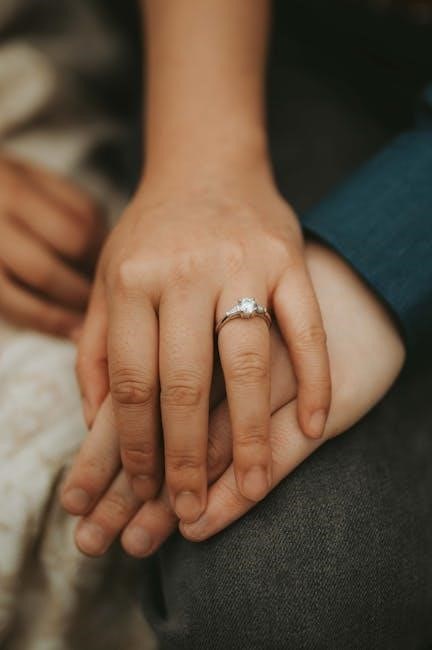
Ring Size Conversion Across Different Countries
Ring size systems vary globally, making conversions between countries essential for accurate fits. The US uses numerical sizes, while the UK and Europe use alphabetical (A-Z). Japan, Switzerland, and other regions have their own scales. For example, a US size 6 equals a UK size L or a Swiss size 16. These differences stem from varying measurement methods and standards. To ensure a perfect fit, especially in international purchases, a detailed conversion chart is indispensable. Jewelers often provide these tools to help customers align their size across different systems. Understanding these conversions is vital to avoid sizing mismatches and ensure comfort and satisfaction. Always refer to a reliable conversion guide when shopping for rings across borders to find your precise size effortlessly.
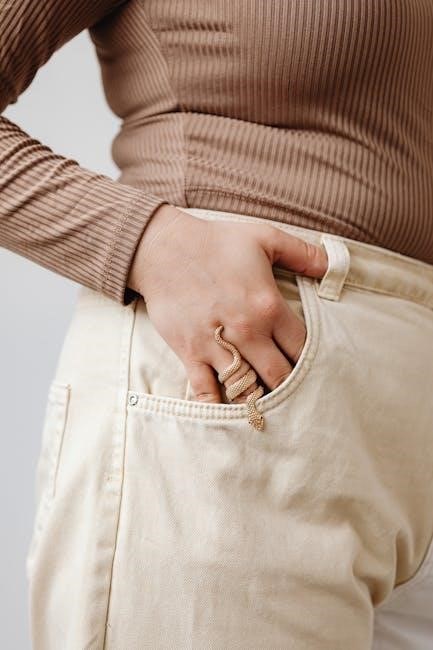
How to Measure Your Ring Finger at Home
Easily measure your ring finger using a string, paper strip, or digital tools. Wrap the string around your finger, mark the overlap, and compare it to a size chart for an accurate fit. Ensure the measurement is taken when your finger is calm and relaxed for the best results.
Using a Printable Ring Size Chart
A printable ring size chart is a convenient and accurate method to determine your ring size at home. Download and print a standardized chart, ensuring your printer settings are correct. Cut out the sizer tool provided on the chart. Wrap the paper strip around the base of your ring finger, marking where the end meets. Compare the measurement to the chart to find your size. For the best fit, measure when your finger is calm and avoid sizing when hands are cold or swollen. This method ensures precision and convenience, helping you choose the perfect ring size without needing specialized tools. It’s a reliable way to find your size before making a purchase or visiting a jeweler.
Measuring with a String or Paper Strip
Measuring your ring finger with a string or paper strip is a simple and effective method. Wrap a flexible string or a thin strip of paper around the base of your finger, ensuring it’s snug but not too tight. Mark the point where the ends meet with a pen. Lay the marked strip flat and measure the length using a ruler. Compare this measurement to a standard ring size chart to determine your size. For accuracy, measure at room temperature, as fingers can swell slightly during the day. This technique is ideal for those without access to specialized tools, providing a reliable way to find your ring size from the comfort of your home. Consistency is key to ensuring a perfect fit for your ring.

Digital Tools for Precise Measurement
Digital tools offer a modern and accurate way to measure your ring finger size. Jewelers often use digital calipers to precisely measure the circumference of the finger, ensuring a perfect fit. For at-home measurement, apps and online tools are available, allowing you to measure your finger using your smartphone. Some tools use a camera to compare your finger size to a digital ring size chart, providing instant results. These digital methods often include features like real-time adjustments and instant size conversion across different countries. They are particularly useful for those who prefer convenience and accuracy without the need for physical measuring aids. By leveraging technology, digital tools make ring sizing straightforward and reliable, helping you find the ideal fit effortlessly. This modern approach ensures precision and eliminates the guesswork traditionally associated with ring sizing.
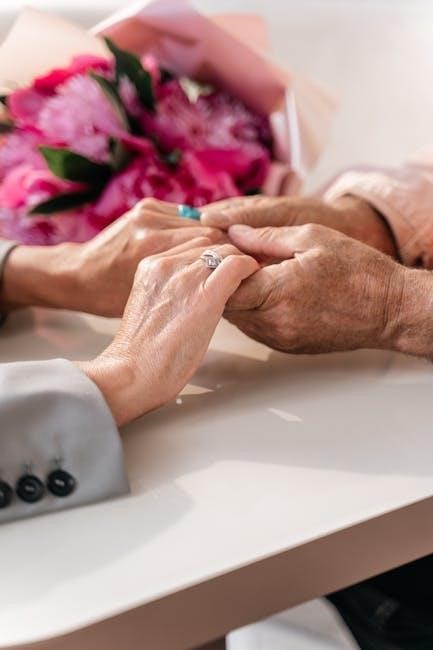
Average Ring Sizes for Men and Women
Average ring sizes for women range from 3 to 9, with 6 being the most common. Men’s sizes typically span from 6 to 13, averaging around 10.
Typical Sizes for Women’s Rings
Women’s ring sizes typically range from 3 to 9 in the U.S., with the average size falling between 6 and 6.5. The most common sizes are 5, 6, and 7, as these fit the majority of women comfortably. Size 6 is often considered the standard and is frequently chosen for engagement and wedding rings. However, finger size can vary based on hand shape, knuckle size, and personal preference. It’s important to measure accurately, as even a half-size difference can affect comfort and fit. For those with larger knuckles, sizing up slightly may be necessary. Always refer to a ring size chart for precise measurements and consider factors like band width, as wider bands may require a slightly larger size for comfort.
Common Sizes for Men’s Rings
Men’s ring sizes generally range from 6 to 13 in the U.S., with the average size falling between 10 and 10.5. The most common sizes for men are 9, 10, and 11, as these tend to fit comfortably for most. However, finger size can vary based on hand shape, knuckle size, and personal preference. For men with larger knuckles, sizing up slightly may be necessary to ensure the ring slides on and off easily. Band width can also influence fit, with wider bands potentially requiring a half size larger for comfort. Always refer to a ring size chart for precise measurements, as sizes can vary slightly between brands. Accurate sizing ensures a comfortable and secure fit, making it essential to measure carefully or consult a professional jeweler.
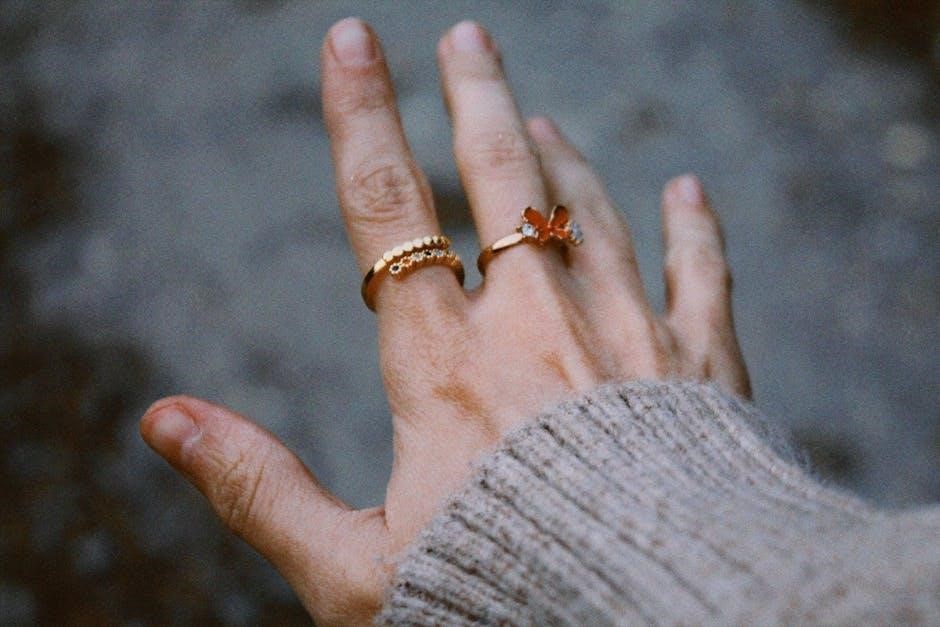
Factors Influencing Ring Size
Ring size is influenced by knuckle size, band width, and finger shape. Larger knuckles may require a slightly bigger size, while wider bands need a half size larger.
Impact of Knuckle Size on Ring Fit
The size of your knuckles significantly affects how a ring fits. If your knuckles are larger, the ring may feel tighter, even if your finger measures smaller. To ensure a comfortable fit, measure both your finger and knuckle. Choose a ring size that falls between these two measurements. For example, if your finger measures a size 7 but your knuckle is larger, you might opt for a size 7.5 or 8. This ensures the ring slides on easily but remains secure. Keep in mind that knuckle size can vary, so it’s crucial to consider this when selecting your ring size for optimal comfort and proper fit.
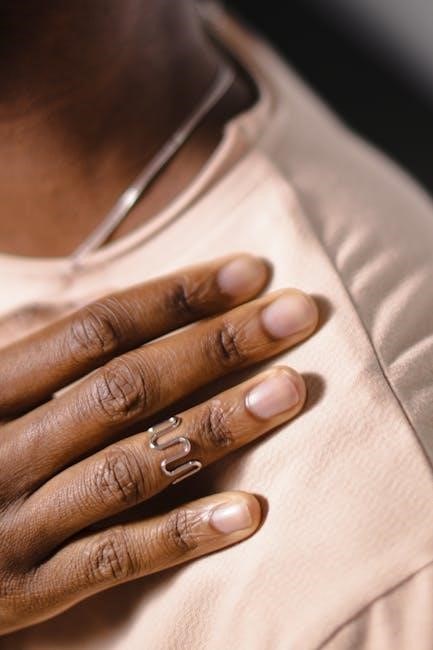
Effect of Band Width on Sizing
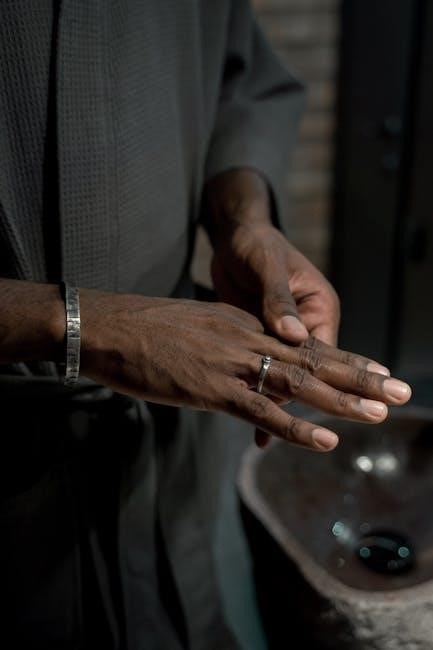
The width of a ring band plays a crucial role in determining the fit. A wider band, typically 8mm or more, may require a half size larger than your standard ring size. This is because the wider band covers more of the finger, leading to a tighter feel. Conversely, narrower bands, usually under 6mm, may fit more comfortably at your usual size. It’s important to consider band width when choosing a ring, as it can significantly impact comfort and how the ring sits on the finger. Always account for this factor to ensure the perfect fit and avoid any discomfort or sizing issues.
How Finger Shape Affects Size

Finger shape significantly influences ring sizing. For individuals with larger knuckles, choosing a slightly larger size ensures the ring can slide past the knuckle comfortably. Conversely, those with slender fingers may prefer a more snug fit. The shape of the finger—whether it’s straight, tapered, or knobby—can also affect how a ring sits. For example, a ring with a wide band may look proportionate on a thicker finger but overwhelming on a slimmer one. Understanding your finger’s unique shape helps in selecting a ring that complements both aesthetics and comfort. This personalization ensures the ring feels natural and enhances the overall wearing experience.
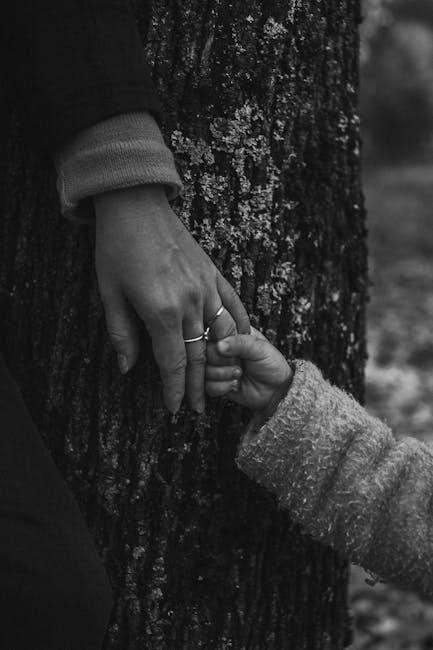
Leave a Reply